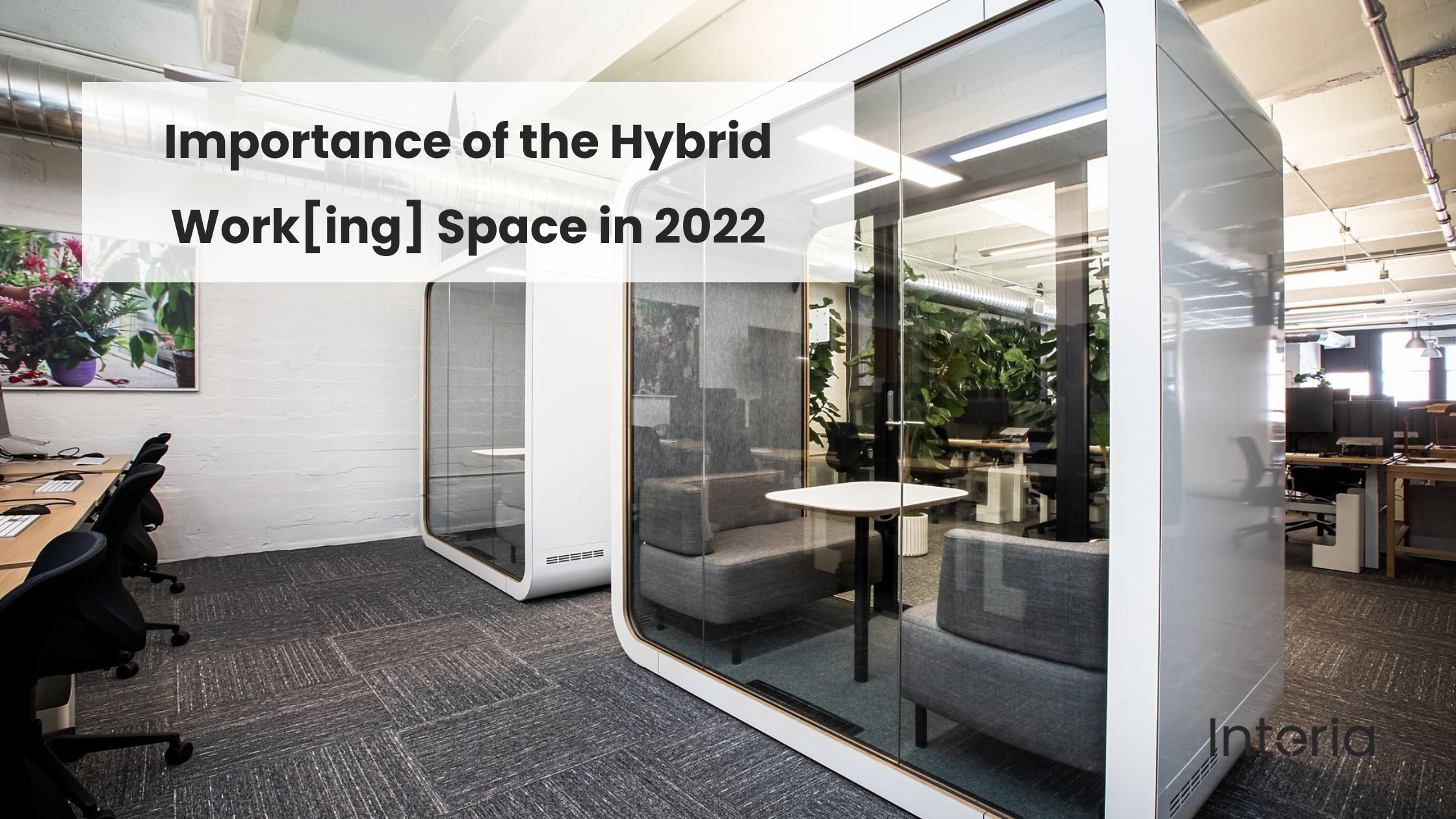
Importance of the Hybrid Work[ing] Space in 2022
The world as we know it is changing, and so are the ways we work. In the recent few years, we’ve seen a considerable change in the working space. Thanks to technological advances, we’ve been able to transition from working 9 to 5 in a cubicle to working anywhere and anytime amid a global pandemic.
As things are gradually getting back to normal, organisations worldwide have their eyes set on returning to the office. Although some are ecstatic at the idea of getting back to the office, not all are ready to give up their flexibility of working remotely. Switching back to the traditional work environment may pose a challenge. According to a recent survey conducted by PwC, 74% of Australian workers prefer a mix of both remote and in-person working. It’s obvious seeing as hybrid working is a great way to combine the best of both worlds.
By the end of 2022, over 60% of all organisations are estimated to have most of their employees working in hybrid workspaces. In this blog post, we will discuss the importance of the hybrid workspace in 2022, but first, let’s get acquainted with the concept of hybrid working.
What Exactly is Hybrid Working?
Hybrid working is a flexible work model that combines the aspects of both working from the office and working remotely. A typical hybrid model entertains employees with the flexibility of working either from the office, home, or any other location. However, the structure of the hybrid work model varies from organisation to organisation, depending on business requirements.
Some organisations require certain fractions of the workforce to operate from office premises, while others can work remotely. Some need all employees to work from the office in a scattered schedule. Some encourage employees to come together in the office space only for important meetings and collaborations and work mostly remotely. You can choose from any of these models or customise one that best suits your business type and workplace culture.
Whichever model you adopt, it should offer an environment for your employees to productively collaborate in a shared space while working in their location of preference, such as an office, home, or both.
In addition to designing an effective hybrid policy and investing in the right tools and technology, reconfiguring an office space is essential to the success of the hybrid working model. So, let’s explore what a hybrid workspace should look like.
Hybrid Workspaces
A hybrid workspace is where employees in a hybrid work model collaborate for the smooth running of the organisation.
As opposed to the traditional workspace, a hybrid workspace fluctuates in its occupancy on a day-to-day basis or at least every other week. The hybrid office design and furniture layout should cater to these needs accordingly. Instead of numerous small cubicles, think of more hubs for collaborations and breakout areas for informal gatherings or refreshments. A quiet meeting room for video conferencing is necessary to communicate with remote employees.
Now, let’s discuss how vital hybrid working space is for businesses in 2022 and beyond.
Importance of the Hybrid Work[ing] Space in 2022
Though hybrid working has been around for some years, it surged in popularity due to the recent COVID-19 pandemic. It reshaped the global work culture so that it’s almost impossible to go back to traditional work settings. Yet, we can’t continue working remotely forever.
Even if you can remotely accomplish most individual work, video conferencing leads to lesser productive meetings, brainstorming sessions, and collaborative tasks. The hybrid workspace is on its way to becoming a “new normal” to counter these limitations.
A well designed and thoughtfully constructed hybrid workspace has its importance in various areas of work. Here are six such areas.
1. Wellbeing
Human beings are social creatures that thrive in social settings. The pandemic proved how much we crave human interaction. As such, employers are happy to be working from the office again. Simultaneously, we can’t deny the comfort and flexibility that remote work brings us. With this in mind, a hybrid workspace gives employees the best of both worlds. They can enjoy the comfort and safety of their home office while interacting with team members face-to-face on alternate days.
Furthermore, hybrid workspaces are designed with employee comfort in mind. The arrangement of comfortable seats, flexible work areas, quiet spaces, etc., let employees feel more at home and work comfortably and productively.
Also, consider how some employees lack a comfortable and peaceful working environment at home. Adapting to hybrid working allows them to leverage hybrid office space to work efficiently.
A happy and comfortable employee is a productive employee. A hybrid office workspace nets you a win-win situation with your employees.
2. Collaboration
The workplace isn’t merely where you get work done; it’s also where ideas are born, and teams synergise to bring forth a greater collaborative output. It’s the cultural hub of the business.
You can utilise quiet spaces within hybrid workplaces for a creative boost and generate mind-blowing ideas. You can further improve on these ideas by collaborating with your team. Each person thinks differently. Two heads are better than one, and three even more so. Thus, bringing together your creative minds at one table brings even better results.
While we have an abundance of technology to collaborate with while working remotely, you can’t replace face-to-face interactions.
3. Productivity
No matter how comfortable and peaceful working from home is, we can’t deny the fact that it’s also full of distractions. Be it unreliable network connectivity or unexpected guest’s visit; obstacles find their way to your home office. The sudden urge to check social media or finish one more house chore in the middle of work is not good for productivity either.
Working entirely from the office seems to overcome the above challenges, and it might work in some cases. However, employees in creative roles can’t fully concentrate on their work in an office setup, given the environment is not always quiet.
With the hybrid working space, employees finding it difficult to work from home can work from the office and vice-versa. Doing so boosts productivity leading your organisation to greater heights.
4. Agility
Agility is an organisation’s ability to adapt to changing circumstances quickly and seamlessly so that high productivity levels are continuously maintained. Agility in the workspace helps employees swiftly evolve to meet changing business requirements, technical advancements, or even health hazards like COVID.
With ever-changing restrictions and safety guidelines in response to COVID-19, workspaces should be agile in operations. Hybrid workspaces are designed to accommodate various employees by limiting or expanding their capacity with social distancing within the workplace. It helps in the smooth operation and functioning of the organisation without compromising on safety measures.
With agility comes the concept of an agile workspace, which is one of the most common examples of hybrid workspaces. An agile workspace is an environment where your employees are not confined to their permanent desks during their working hours. Instead, they have the flexibility to move around and make any corner of the workspace their office. Agile workspaces are usually open with comfortable sitting areas that foster multi-department integration.
5. Employee Retention
Employee retention directly affects the business by saving time, money, and resources required to hire and train recruits.
After working remotely for two years, some may want to return to working from the office, while others are all too comfortable working from home and hoping to continue doing so. This can result in employee turnover if the company proceeds with the work model their employees don’t prefer. Adopting a hybrid working model offers a middle ground for both situations.
The work environment and culture also play significant roles in retaining new employees. A hybrid workspace brings together people from different departments, fostering relationships between co-workers. Its fun and collaborative setting also promote an engaging and supportive work culture.
6. Cost optimisation
Since a hybrid workspace accommodates only a portion of the workforce, it requires less space. Companies can relocate to a smaller unit to lower their overhead costs or even rent out unused space. It also reduces the overall property management costs as there is decreased energy usage and other resources.
A hybrid work model is profitable for employers and employees, who can save time and money on daily commuting and meals.
Opting for a hybrid workspace in 2022 could be the best strategic decision you make. How? Its benefits can snowball into considerably minimising your overall business costs in the long run through better employee retention and productivity.
Get the Experts on Your Side
The promising benefits of a hybrid workspace can convince companies to quickly adapt to this work model. However, a poorly designed and implemented workspace will surely take its toll. Be it reconfiguring your traditional workplace into a hybrid one or constructing a hybrid space in a new location, make sure you design the workspace to align with the purpose of a hybrid work model. In short, it must be flexible, comfortable, productive and adaptable.
Bright spaces with comfortable seating arrangements and good quality furniture laid out in an accessible manner encourage creativity, collaboration, and productivity.
However, there’s no one-size-fits-all approach to creating a hybrid workspace. Workplace cultures, styles and practices differ, so having amenities custom made solely for your business is the way to go.
With 30 years of experience in the industry, Interia can create highly productive and qualitative work[ing] spaces that reflect your organisational values. Our team of experts takes care of everything from planning, customisation, and manufacturing to installation. If you’re creating a hybrid workspace in Australia, feel free to contact us at 1800 549 852 or book an online consultation.



